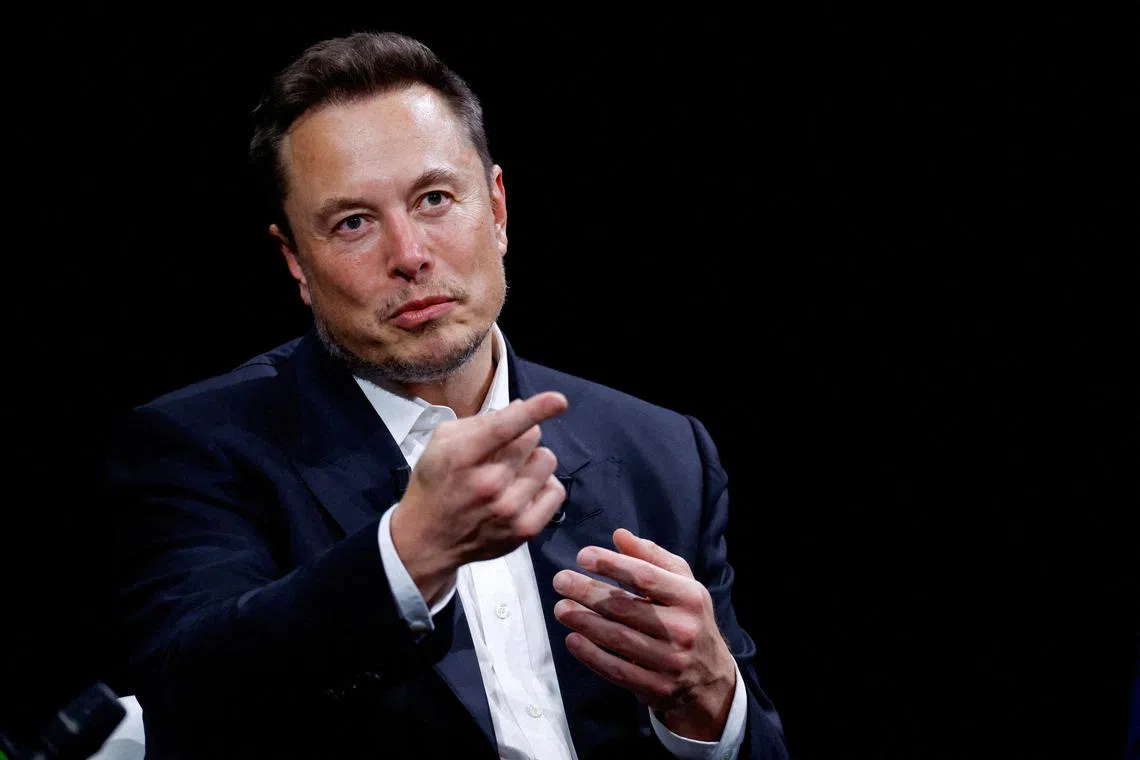Musk’s Neuralink device implanted in second patient; brain-computer company to operate on more
Sign up now: Get ST's newsletters delivered to your inbox

Mr Elon Musk said his brain-computer company Neuralink expected to operate on a total of 10 patients in 2024.
PHOTO: REUTERS
Follow topic:
Mr Elon Musk’s brain-computer company Neuralink has successfully implanted its device into a second patient, Mr Musk said on a podcast hosted by computer scientist Lex Fridman.
“I don’t want to jinx it, but it seems to have gone extremely well with the second implant,” Mr Musk said. He added there were “a lot of signal, a lot of electrodes”.
Mr Musk provided few details about the surgery, which had to be postponed after the patient originally scheduled for the second procedure had to withdraw from it in June due to an unspecified medical condition.
The first patient, quadriplegic Noland Arbaugh, had Neuralink’s device implanted earlier in 2024. He has spoken often about the improvements it has made in his life, for example, giving him the ability to play video games.
Neuralink expected to operate on a total of 10 patients in 2024, Mr Musk said on the podcast.
Additionally, the company said during the podcast that it has advanced efforts to restore limb function in people with paralysis. That addresses a different capability to what its device does currently, which is allow a patient to move a cursor by thinking about it.
“We actually have made a huge amount of progress sewing electrodes into the spinal cord as a potential workaround for a spinal-cord injury,” Dr Matthew MacDougall, the company’s head surgeon, said in the podcast.
A brain implant would interact with a spine implant to create muscle contractions in previously paralysed arms and legs, and Neuralink has already demonstrated it “in crude fashion” in anaesthetised animals, he said.
During the procedure, those animals are “moving their legs in a sort of walking pattern”, Dr MacDougall said, noting it was preliminary work. BLOOMBERG

